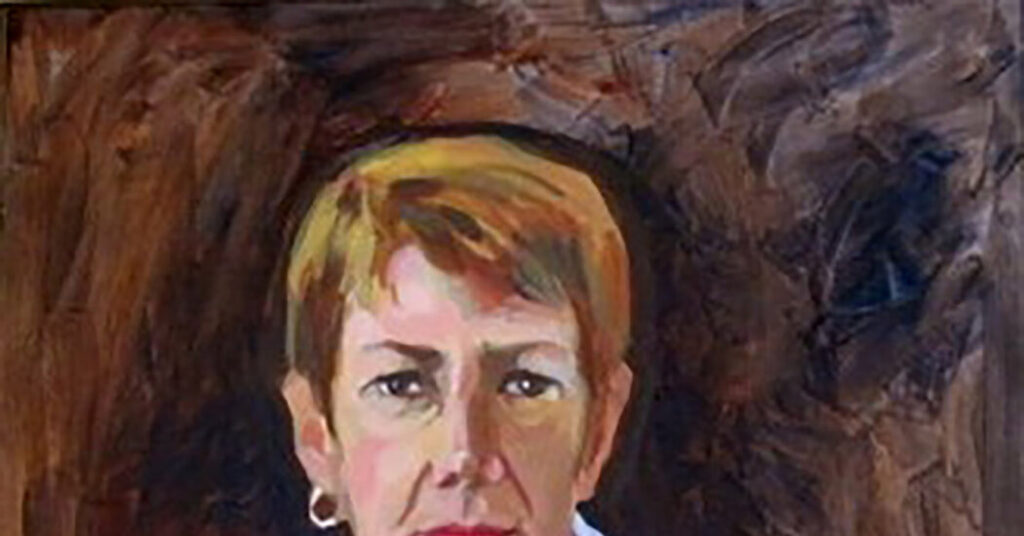Elsa Honig Fine, an art historian who founded a feminist art journal and published influential textbooks on Black and female artists in an era when scholarship in those areas was scarce, died on April 7 at her home in Manhattan. She was 94.
Her daughter Amy Fine Collins said the cause was heart failure.
When Ms. Fine began publishing Woman’s Art Journal in 1980, the art world was still largely male dominated, and many female artists were relegated to the supporting roles of muse, wife or hobbyist. Two prominent periodicals, The Feminist Art Journal and Womanart, had gone out of business in the late 1970s, leaving a niche that the new journal filled.
“No one was publishing books on women,” Margaret Barlow, who helped start the journal with Ms. Fine, said in an interview. “Women were just seen as dabblers and as not sellable.”
The inaugural issue laid out their mission: “recovering a lost heritage” of female artists. Ms. Fine, in particular, was frustrated with the cyclical nature of attention received by artists like Frida Kahlo, Alice Neel and Leonora Carrington, who were discovered, forgotten and then rediscovered and hailed as folk heroes.
Woman’s Art Journal sought to maintain their presence in the spotlight. Its ethos aligned with that of an artwork featured in the second issue: Judy Chicago’s installation “The Dinner Party,” which took the form of a banquet table with 39 place settings, most resembling stylized vulvas, symbolizing important women in history. Carol Snyder’s article described the installation as an altar that glowed “in rich brilliance against an engulfing blackness — a unidimensional metaphor for women’s radiance and historical obscurity.”
Ms. Fine helped resurrect the work of overlooked women who defied convention, including Rosa Bonheur, a 19th-century lesbian who painted pastoral scenes, and Romaine Brooks, who dressed in men’s clothes and created moody gray portraits.
The magazine, which still comes out semiannually, became the longest continually published feminist art journal.
Two years before its inception, Ms. Fine published one of the first general surveys of art produced by women, “Women and Art: A History of Women Painters and Sculptors from the Renaissance to the 20th Century.” The textbook covered the careers of nearly 100 artists, including Sofonisba Anguissola, a Renaissance painter, and Marisol Escobar, a sculptor who was famous for her collaborations with Andy Warhol but who fell into obscurity before achieving a kind of posthumous cult status.
In 1973, Ms. Fine published another textbook, “The Afro-American Artist: A Search for Identity.” As a white woman writing about Black artists, she had her detractors. The artist Romare Bearden wrote in a review in the academic journal Leonardo that the book “confuses art history with social theories that are primarily racist to anyone who has a general knowledge of art.”
To others, though, it was a welcome source of information. In a 2024 article in The New Yorker, Thelma Golden, the director of the Studio Museum in Harlem, remembered it as one of the few reference books about Black artists available at the time. “I studied every artist in those books,” Ms. Golden said. “I sort of committed them to memory.”
Elsa Betty Honig was born on May 24, 1930, in Bayonne, N.J., to Samuel M. Honig, a lawyer, and Yetta Edith (Susskind) Honig, who managed the home and worked for a submarine company during World War II.
As a teenager, Elsa took art lessons, and drawing was something she continued to do throughout her life. The summer she was 20, she studied in Provincetown, Mass., with the Abstract Expressionist painter Hans Hofmann. The following year, she graduated from Syracuse University with a B.F.A. in painting and married Harold J. Fine, a psychologist.
Ms. Fine went on to earn a master’s degree in education from Temple University in Philadelphia, in 1967, and a Ph.D. in education from the University of Tennessee, in 1970. Her motivation was simple: She wanted to train art teachers because she believed that the art education her two daughters received in public school had stifled their creativity.
In addition to her daughter Ms. Collins, an editor for the digital media company Air Mail and a former correspondent for Vanity Fair magazine, Ms. Fine is survived by another daughter, Erika Fine, a freelance writer and editor; a granddaughter, Flora Collins, a novelist; and a sister, Doris Honig Guenter.
The Ph.D. dissertation that Ms. Fine wrote at the University of Tennessee would become “The Afro-American Artist: A Search for Identity.” In the mid-1970s, after the textbook was published, she sued the school for discrimination when it hired a male professor over her — although he went on to use her book to teach his class. Ms. Fine lost the suit, but the experience stayed with her. Not long after, she started Woman’s Art Journal.
Each issue of the magazine began with an editor’s note, “One Point Perspective,” which Ms. Fine wrote until she retired in 2006. In her last one, she observed that “the situation for women artists has changed dramatically since we cobbled together that first issue.”
The plan was to stop publishing the journal after Ms. Fine retired, but the response from readers encouraged Ms. Barlow and Joan Marter, another editor, to continue on their own, with the support of Rutgers University.
“The cover image, Adélaïde Labille-Guiard’s ‘Self-Portrait with Two Pupils’ (1785), marks a fitting closure to my three-decade obsession with the history of women and art,” Ms. Fine wrote in her final editor’s note.
In the painting, the artist sits at an easel, two students standing behind her. At the time, Ms. Labille-Guiard was one of the few women to have been admitted to the Royal Academy of Painting and Sculpture in Paris, and the piece was seen as a plea to admit more female artists. Beneath a wide-brimmed hat adorned with feathers, her face glows with pride.
https://www.nytimes.com/2025/04/15/arts/elsa-honig-fine-dead.html


